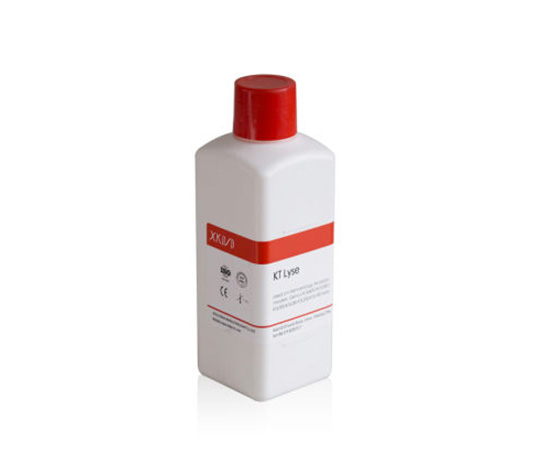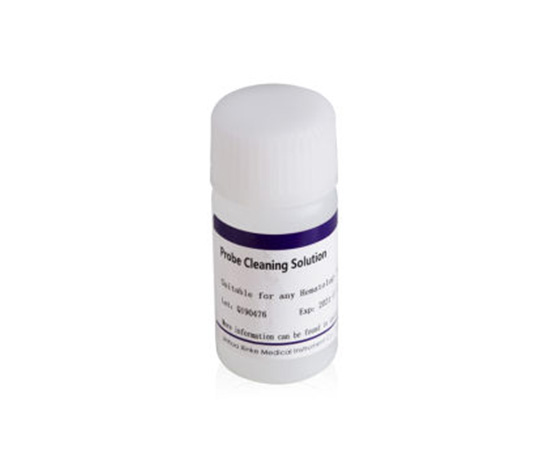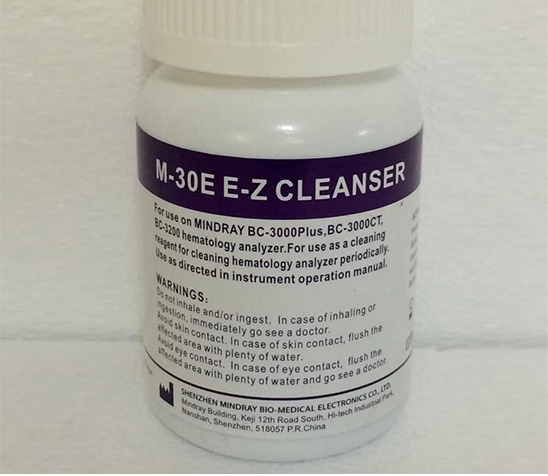A Chemical Reagent is defined as a "substance or compound that is added to a system in order to bring about a chemical reaction or is added to see if a reaction occurs". Such a reaction is used to confirm the presence of another substance. Examples of such analytical reagents include Fehling's reagent, Millon's reagent and Tollens' reagent. In organic chemistry, reagents are compounds or mixtures, usually composed of inorganic or small organic molecules that are used to affect a transformation on an organic substrate. Examples of organic reagents include the Collins reagent, Fenton's reagent, and Grignard reagent.
Chemicals and reagents play a critical role in the manufacturing and testing of pharmaceutical products, medical devices, biologics, cell- and tissue-based products, and many other healthcare-related solutions. Laboratories and researchers who use chemicals and reagents trust that their manufacturers have properly identified the grades of each chemical and ensured that the chemicals have met all regulatory and compliance standards for their intended use. It is imperative that everyone in the custody supply chain know and understand the different grades of chemicals and their uses, which are explained in this article.
The Raya Pharmaceutical Import and Wholesale a number of chemicals dedicated to the pharmaceutical industry. They meet the highest international quality standards for the production of medicines and other pharmaceutical products. The offer of the Raya Pharmaceutical Import and Wholesale for pharmacy includes chlorine and chlorinated products as well as other chemical substances, for example, macrogols or ethoxylated oleyl alcohols.
The pharmaceutical industry are the chemical reagents used in qualitative and quantitative analysis. These tests allow the determination of the chemical composition and the content of individual ingredients in pharmaceutical products, expressed either as a numerical value or percentage. They can also establish whether substances have been adversely affected by physicochemical or biological factors (light, solution pH, temperature or enzymes).
In qualitative analysis, the choice of the chemical reagent is dictated by the target element. In assays for nitrogen content, saturated solutions of iron (II) sulphate and diluted sulphuric acid are used. Sulphur can be detected using reactions with lead acetate or sodium nitroprusside. To detect halogens, assays with silver nitrate (V) are utilised, whereas to identify them chlorine water and chloroform are often used.
Qualitative analysis can involve various methods, including acid-base, precipitation, redoxymetric, fluorometric, spectrophotometric and colorimetric titration. Most of them require chemical reagents, necessary to conduct the titration process, such as potassium permanganate, iron (II) sulphate and iodine or thiosulphate solutions.

Diluents are low-molecular-weight, low-viscosity compounds that are used to reduce the viscosity or enhance the solubility of a resin and/or hardener.
Diluents are low-molecular-weight, low-viscosity compounds that are used to reduce the viscosity or enhance the solubility of a resin and/or hardener. Diluents may be either reactive or non-reactive. However, the reactive types are more desirable since they combine chemically with the main resin during cure and are not free to outgas or leach, especially during thermal-vacuum exposure. Epoxy diluents, for example, are formulated together with epoxy resins to reduce the viscosity and still remain 100% solids. Normally, solvents would be used to reduce viscosity, but most organic solvents are now being disallowed because of their high volatile emissions. Some long-chain aliphatic reactive diluents can also improve the flexural strength of epoxy adhesives.

It is recommended that the electrodes be cleaned regularly with genrui Probe Cleaner solution. It is recommended that you clean your meter before calibrating or storing it. This will ensure that it operates with accuracy and precision once calibrated. Always keep your pH electrode stored in genuri pH Electrode Storage solution when not in use.
pH electrodes may show slow response due to the build up of organic and inorganic contaminants which coat or clog them. Regular cleaning with genuri Probe Cleaner solution can prolong
the life of your meter and maximise electrode performance. Genuri Probe Cleaner solution can also be used to remove contaminants from Conductivity meter electrodes, making this product a worthwhile investment.

EZ Cleaner is powered by an effective new detergent, which is an innovative complex blend containing the latest surfactant structures, and is a fully non-toxic, biodegradable detergent. The formulation does not contain any hazardous aldehydes or chlorine generating components. This new formulation is highly effective as a cleaner against bacteria, fungi and viruses. It is unique in that it helps to stop biofilm from forming, rather than just removing it once formed.
Our chemical and reagent products have degree of chemical purity is needed based on the intended use. The following list describes the seven most common grades our chemicals and reagents has, from highest to lowest grade/purity: